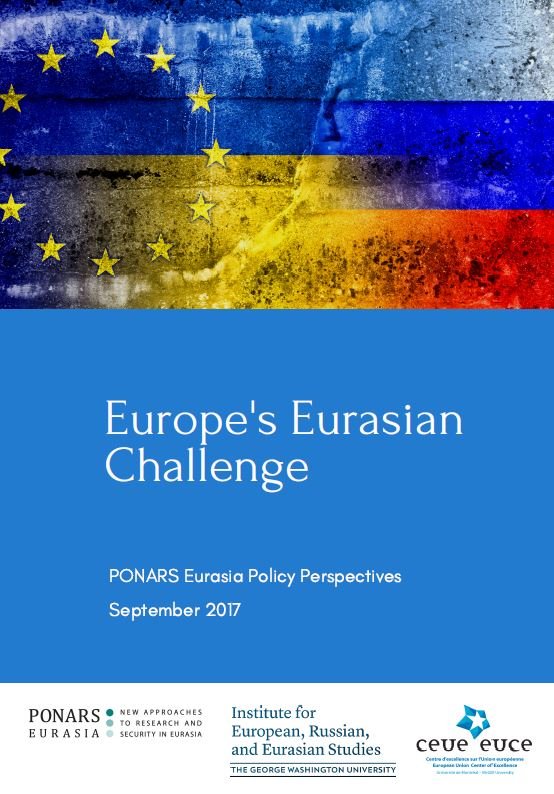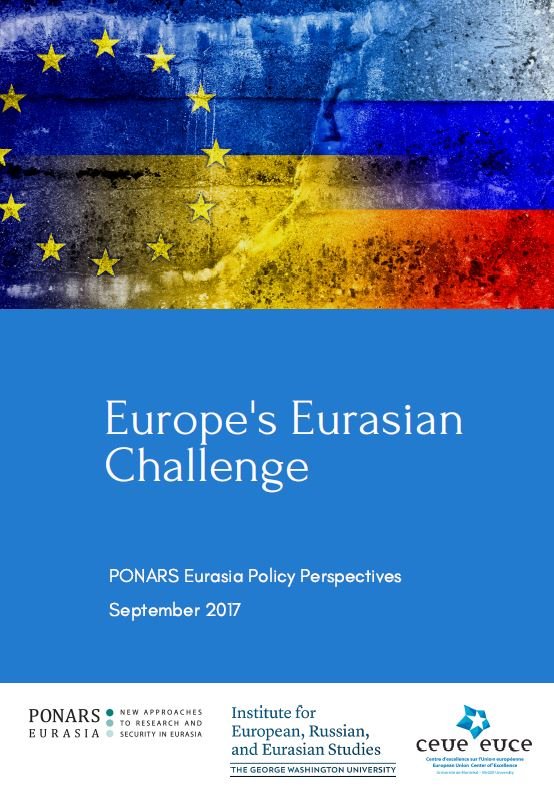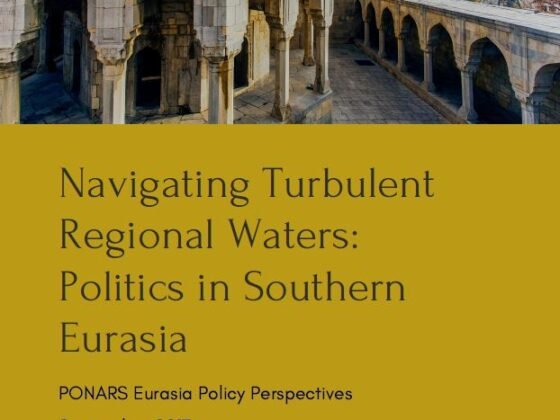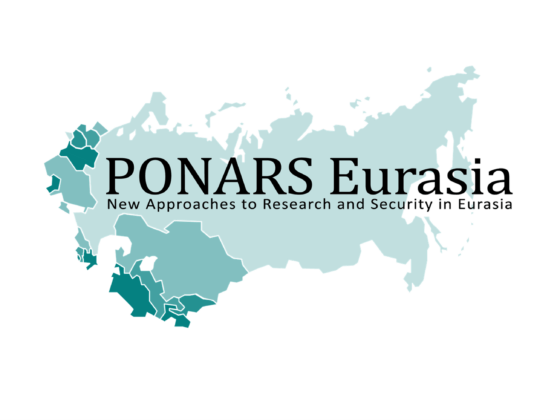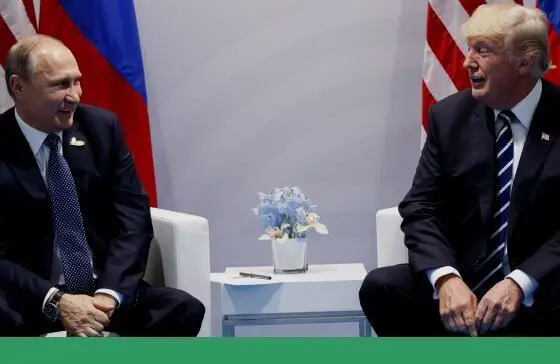Europe’s interactions with Eurasian countries have been deeply shaken not only by the 2014 Ukrainian crisis, but also by the decline of EU soft power in the whole region. This was produced by a series of sequential crises starting with the debt and financial crisis and continuing with crises over Syria and refugees. In these conditions, Europe-Russia interactions, and more globally Europe’s toward its “Eastern Neighborhood” and post-Soviet countries, have been challenging.
In this volume, PONARS Eurasia experts address the issue of reshaping the Europe-Russia relationship beyond sanctions policy, for instance by delivering direct benefits to ordinary Russian citizens that would be unavailable to elites. A renewed East-West dialogue could follow different trajectories, depending how each actor reacts to its environment, with potential paths for improvement, stagnation, or deterioration. If the ongoing asymmetric war in the Donbas remains a critical point of contention, the Syrian war and Russia’s engagement in it plays a driving role in reshaping the balance between Moscow and European capitals, alongside the Kremlin’s trying to accentuate the disunity in and lack of strategy from Western countries toward the Middle East. Mutual mistrust and suspicion have increased. Still, Russia continues to adhere to strategic deterrence theory, but has developed a new generation of precision-guided conventional weapons that may alter NATO’s balance. At a more micro level, the picture is also more grey than black-and-white: Russian-European cross-border cooperation has been harmed, but some cross-border activities have continued, with some neighbors such as Norway, Finland, and Poland maintaining joint projects with Russia.
The EU has seen a more complicated picture in Ukraine. If the idea of joining NATO seems to be on the rise in Ukrainian public opinion, the relationship to Europe is more complex, with many Ukrainians being disappointed by what they see as a lack of European involvement. Moreover, it is hard for EU institutions to reform Ukraine’s judiciary and battle corruption when the EU itself cannot adhere to its own “stick and carrot” principles. Belarus does not find itself in an easier position, with increasing mistrust in the Minsk-Moscow relationship.
In southern Eurasia, Europe’s influence has also diminished and its image partly damaged. Russia has reinforced its position both in Armenia and in Azerbaijan, limiting room for maneuvering by Brussels and European capitals in the South Caucasus. Yet, Yerevan still looks for more interaction with the EU while Baku is worried about the UK’s Brexit referendum and what it may signify for the EU presence in the Caspian region. In Central Asia, Europe’s status as the main aid donor and a major trade partner has not really translated into structured political influence, while the region’s leaders continue to see themselves as sandwiched between Moscow and Beijing.
The majority of papers in this volume are based on a PONARS Eurasia policy workshop held with the EU Centre of Excellence at McGill University, Quebec, Canada, December 1-3, 2016.
View more: E-Books/Policy Perspectives
